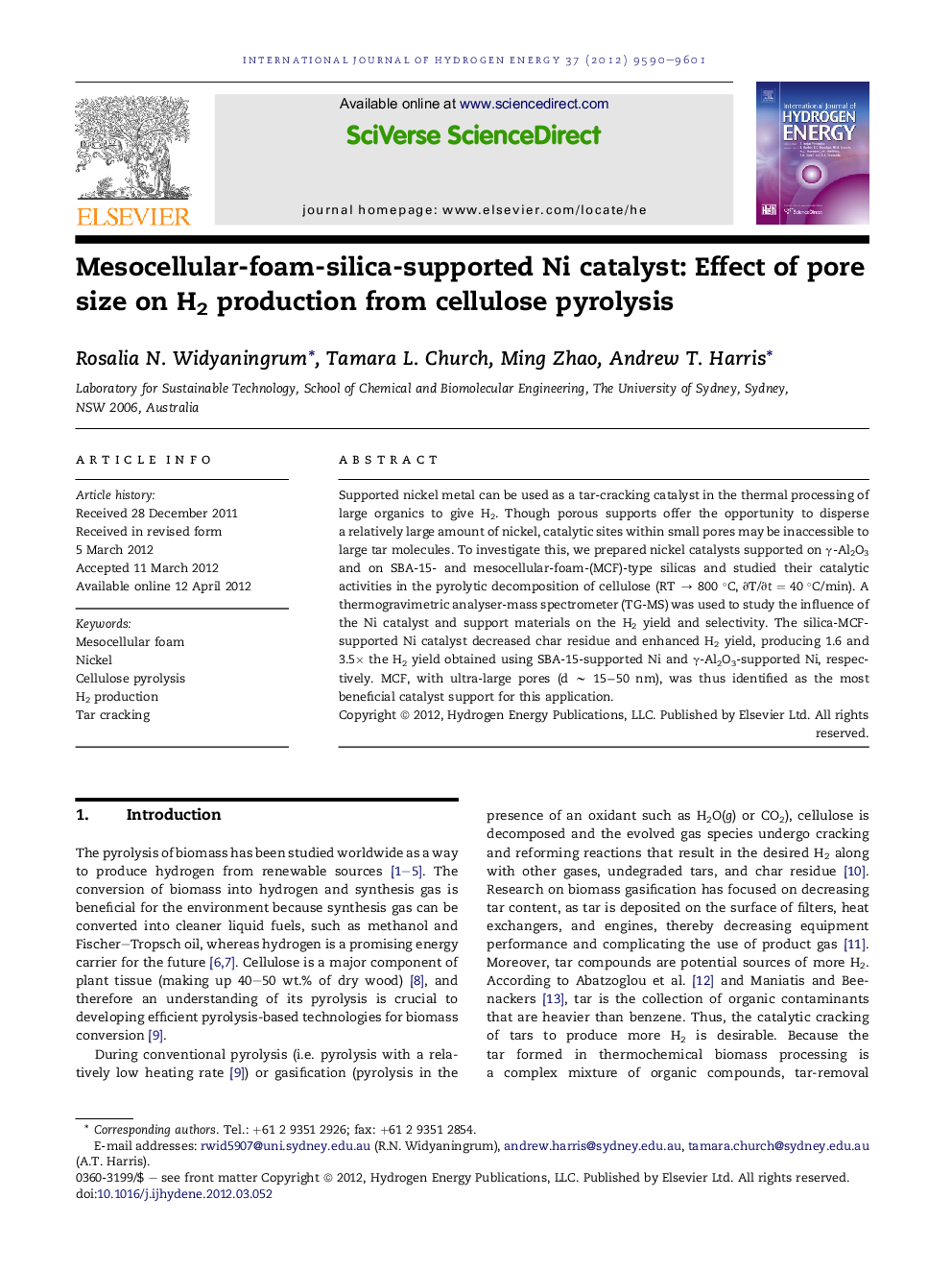| Article ID | Journal | Published Year | Pages | File Type |
|---|---|---|---|---|
| 1271272 | International Journal of Hydrogen Energy | 2012 | 12 Pages |
Supported nickel metal can be used as a tar-cracking catalyst in the thermal processing of large organics to give H2. Though porous supports offer the opportunity to disperse a relatively large amount of nickel, catalytic sites within small pores may be inaccessible to large tar molecules. To investigate this, we prepared nickel catalysts supported on γ-Al2O3 and on SBA-15- and mesocellular-foam-(MCF)-type silicas and studied their catalytic activities in the pyrolytic decomposition of cellulose (RT → 800 °C, ∂T/∂t = 40 °C/min). A thermogravimetric analyser-mass spectrometer (TG-MS) was used to study the influence of the Ni catalyst and support materials on the H2 yield and selectivity. The silica-MCF-supported Ni catalyst decreased char residue and enhanced H2 yield, producing 1.6 and 3.5× the H2 yield obtained using SBA-15-supported Ni and γ-Al2O3-supported Ni, respectively. MCF, with ultra-large pores (d ∼ 15−50 nm), was thus identified as the most beneficial catalyst support for this application.
Graphical AbstractFigure optionsDownload full-size imageDownload as PowerPoint slideHighlights► Ni catalysts on supports with various pore sizes were used in cellulose pyrolysis. ► Mesocellular-foam silica (MCF) was the best support. ► MCF's ultra-large pores allowed the formation of smaller nickel catalyst particles. ► MCF's large surface area and pores improved mass transfer of tar molecules. ► MCF-supported Ni catalyst gave the most H2 and least char, aldehydes, and alkanes.
